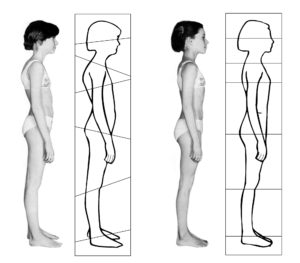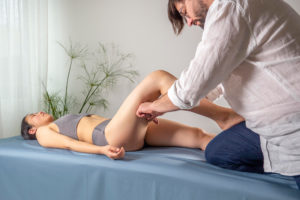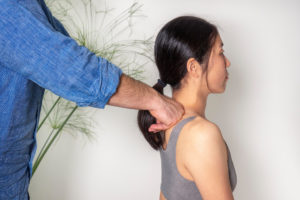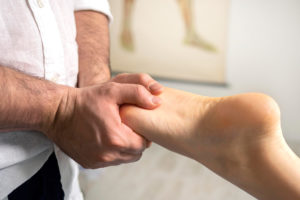
What is Rolfing®?
What is Rolfing®?
Rolfing® Structural Integration is a process-based manually applied technique developed by Dr. Ida Rolf Ph.D. that aims to improve the structure and movement of the human body as a whole rather than treating particular symptoms. In Rolfing SI our goal is to bring the body in better balance in relationship with Gravity by working on the body-wide fascial network (connective tissue) and by using movement education.
Improving the body’s relationship to Gravity results in a more economic way of functioning, reduced chronic pain, better freedom of movement and improved feeling of well being of body and mind.
“What is Rolfing? A process and a technique of preparing the body to be able to accept the gravitational field of Earth for support, by working on the soft tissue to loosen body blocks and allow them to align vertically” Dr. Ida P. Rolf
How does it work?
Rolfers™ work in a holistic way, hands-on, re-organising the body-wide facial system. By releasing holding patterns in the fascial system, the body regains its flexibility and freedom of movement and is allowed to find a better balance in the field of Gravity. Often the movement education that comes with Rolfing® sessions helps people deepen their understanding of their own body and encourages them to improve their postural habits that lead to complains.
In a Rolfing session, practitioner and client work together as a ‘learning team’. Instead of just performing a number of skilled technics on a mostly passive client, we believe that there is benefit to be gained by involving the clients as an active partner in an interaction process, for example asking for specific micro movement during the fascial interactions (manipulations/interventions).
10 sessions series
Although single Rolfing sessions are definitely appropriate, since in Rolfing Structural Integration we aim to improve the functioning of the body as a whole, we traditionally work with the “10 sessions series” which is a process originally developed by Dr. Ida P. Rolf over many years to address the body in a holistic comprehensive way. Each of
the 10 Rolfing sessions has a different theme and area which we work on, keeping in mind the individual needs of each client. We begin by opening up the more superficial layers of the body in the first three sessions and introduce the basic concepts of Rolfing Structural Integration. In sessions 4-7 we address the ‘core’ of the body, working on deeper layers and inviting more lasting change. Sessions 8-10 are even more personalised, aiming to integrate all the work in a good functioning whole.
The 10 Rolfing session series is a process. Clients are therefore advised to leave one to four weeks time in between sessions according to their needs for the body to integrate the changes.
What to expect in a Rolfing® session?
Every Rolfing® session lasts between one and one and a half hours. To gain a better understand of your structure and way of functioning, we usually start with a short analysis of how the client stands, walks and sits.
We work mainly on a massage table where you lie relaxed and the Rolfer™ work with his hands on the client’s body by applying sensitive and precise pressure to specific areas of your body. Rolfers work with a spectrum of touch, whose quality varies from gentle to deep and intense. We also often work sitting and standing to help the client integrate the results in Gravity. In a Rolfing session the client is usually on their underwear and a Rolfer often may ask for the client to participate in the session through movement.
After a session people most often report a feeling of deep relaxation, better stability, more freedom of movement, a feeling of re-vitalisation and increased awareness.
For who is Rolfing? Make a booking
Dr. Rolf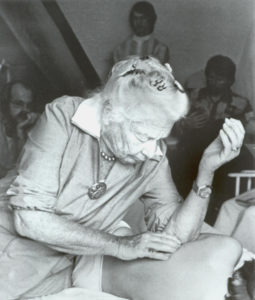
Dr. Ida P. Rolf (1896-1979) was one of the first women to receive her Ph.D in biochemistry in 1920. By looking to overcome her own health problems and help her children, Dr. Rolf developed an interest in osteopathy, manual therapy, yoga, homeopathy and chiropractic. Soon she realised that the body functions better if it is well aligned and she became interested in the effects of gravity on our bodies. Soon Dr. Rolf came to ask: “What conditions must be fulfilled in order for the human body-structure to be organised and integrated in gravity so that the whole person can function in the most optimal and economical way?”. Her answer to this was a soft tissue manipulation and movement education method that Dr. Rolf called “Structural Integration” (SI) or simply Rolfing® Structural Integration. In the mid-60’s Dr. Rolf was invited to teach Rolfing SI at Esalen Institute and got involved with the ‘Human Potential Movement’. In 1971 the Rolf Institute of Structural Integration(RISI) was formally formed and since then in has been responsible for the training of Rolfers™.
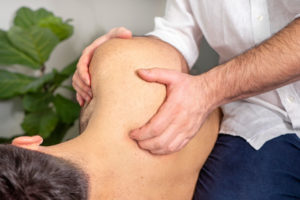 What is fascia?
What is fascia?
Fascia was initially seen as a mere network of collagen that held things together in their place. Recent scientific research has revealed that fascia is indeed a very important organ in our bodies. Fascia holds everything together in the body, separates everything from everything else and helps things relate and glide on one another. Fascia provides structure by defining tissue boundaries, providing integrity and elasticity to organs, muscles, vessels, nerves and bones and helps us better understand how all the seemingly disparate parts of our physiology are assembled into a coherent whole. Fascia has a large role not only in maintaining static posture, but also in dynamic movement and efficient energy transfer throughout the body.
Nowadays we know that Fascia senses and transmits mechanical signs making it one of our main organs of proprioception -or feeling our own body-, it helps our body measure tension, and based on this ability, our body constantly re-organises itself in order to meet the ever changing demands of functioning in the field of gravity.
Due to it’s composition, fascia is flexible and pliable. Under the right amount of pressure fascia gets re-hydrated and it’s shape can be changed. Rolfing® Structural Integration utilises this ability to help bring the body’s relationship to the force of gravity in balance and in so doing the body achieves higher levels of organising and functioning.
For who is Rolfing®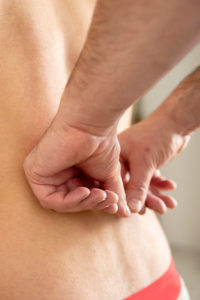
Rolfing® SI can have a positive effect on:
- Lower back pain
- Overcoming bad postural habbits
- Chronic pain
- Releasing stress related stiffness
- Sciatica
- Hip pain
- Frozen shoulder
- Repetitive strain injury (RSI)
- General stiffness
- Carpal tunnel syndrom
- Lack of mobility
- Burn out
- Post operative pain
- Headaches
- Temporomandibular joint dysfunction (TMJ)
- Neck pain
- Scoliosis
- Tension release following trauma
Rolfing® SI is also often used by: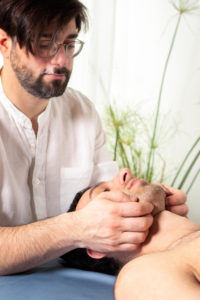
- People who work very intensely with their body such as athletes, dancers, musicians, actors, performers, etc.
- People interested in the good function of their body’s such as Yoga practitioners, Pilates students, amateur athletes, martial artists, etc.
- People who have tried various approaches to relieving their symptoms and had limited success.
- Individuals feeling restricted because of doing repetitive movement often.
- People wanting to improve complaints that come with chronic stiffness and ageing.
- People interested in understanding better the body and it’s function.
- Everybody looking to improve their posture and find smoother, more elegant and energy efficient ways of moving sitting and standing.
- Individuals looking for a deep relaxation effect in the whole system.
- People who are interested in fascia and how it affects the body’s function and structure.

